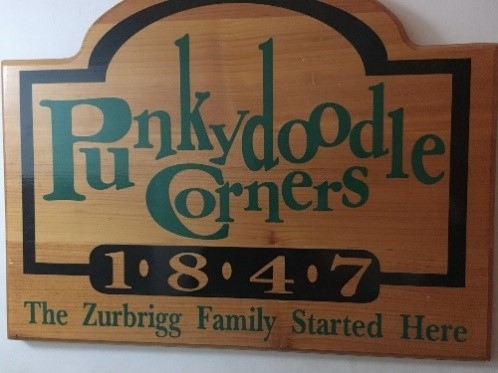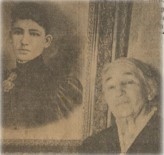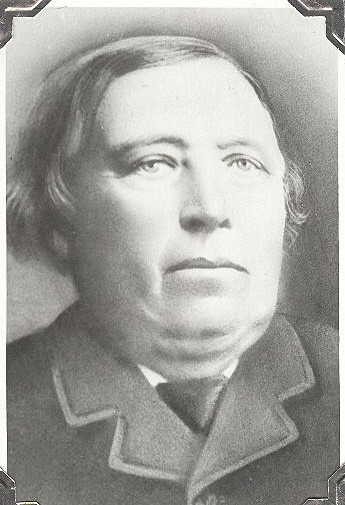Punkeydoodle's Corner - Part 1: The Stories Behind the Name
Punkeydoodle's Corner - Part 1: The Stories Behind the Name
Author and family history researcher Alayne Fulton Kleser delves into the family mystery surrounding the Zurbriggs' connection to the naming of Punkeydoodle's Corners.
By Alayne Fulton Kleser, author
Several years ago, Ken Zurbrigg made a sign drawing our family into the Punkeydoodle story. As the years passed, I wondered about the accuracy of the sign - in all my years of research, I had never come across anything suggesting that our family was descended from the John Zurbrigg mentioned in the stories, but if it wasn’t our John – who was it? When I came across a newspaper article dating back to 1938, I decided to learn more.
Located at the intersection of the counties of Oxford, Perth, and Waterloo, Punkeydoodle’s Corner is an unincorporated hamlet known today for its unusual name and the resulting sign theft. At the turn of the century, however, it was a thriving community of approximately one hundred families. A “stop on the old stage route along… the Huron Road,” it boasted amenities such as a hotel, blacksmith shop, sawmill, cider mill, and a livery stable.
In January of 1952, the story of the hamlet’s name spread from Vancouver to Miami after a mumps epidemic hit the news. The Edmonton Journal reported that the local school children were “feeling punk at Punkeydoodles Corners” with “more than 15” diagnosed with the mumps and that “Teacher Delford Zehr’s classes” had been “curtailed”.
Only five years later, the Ottawa Journal noted that Punkeydoodle’s Corner had become “a ghost town,” having little to offer. It had “withered” when the railway bypassed the area, replacing the stage, and died “when the car crowded the buggy off the old Huron Road.” Only memories of the once-bustling community remained – memories and a unique name whose origins had been lost in the mists of time.
Over the years, different variations of the name have surfaced, and it was only after a “comprehensive survey” of the hamlet’s population (then 15) was completed during the Canada Day celebrations in 1982 that the name was fixed in history; the community declared it “Punkeydoodle’s Corner”. But where did the name originate?
The Stories Behind the Name
The oldest theory behind the name that I have discovered was shared by Caroline Burchatzi during an interview with the Waterloo Chronicle in 1938. This is the story that sent me down my rabbit hole. As Carrie told it, her mother, Elizabeth, was married twice. Her first husband, John Zurbrigg, was an early settler who grew pumpkins. Her second husband, John Zurbuchen, was Carrie’s father.

Carrie with a portrait of her mother, courtesy of the Kitchener Public Library
According to Carrie, the nearest settlers were the Hellmers, who lived up the road towards New Hamburg. Unfortunately, whenever John Zurbrigg met up with Mrs. Hellmer, it ended up in an argument. One day, during a disagreement, an overly excited Mrs. Hellmer pointed her finger at Mr. Zurbrigg and exclaimed “Why, you Punkeydoodle, you!” The tale quickly spread amongst the settlers and they forever after called him “Punkeydoodle” and his land, “Punkeydoodle’s Corners.”
The next story I tracked down was told to Fred Stock by his grandfather, Konrad. According to Fred, his grandfather settled a few miles south of the corner, on the west ½ of lot 31, Concession 16 in East Zorra Township. Conrad’s version of the story puts John Zurbuchen as the owner of a tavern located at Block A, Concession 1, Lot 29 in Wilmot Township.

Konrad Stock, courtesy of descendant Sharon Weitzel
An article put out by The Waterloo Historical Society in 1983 suggested that group singing by customers was customary with small local inns being one of the few settings available for social gatherings outside of church. If those gathered did not start singing on their own, the innkeeper made it a point to get things started (after all, singing made men thirsty). Stock suggested that, as a native of Germany, when Zurbuchen sang the words to “Yankee Doodle,” they were heard as “Punkeydoodle” and so, in this story, it is John Zurbuchen who came to be known as Punkeydoodle.
A third story was written down by Willis Weicker during the Canada Day celebrations in 1982. Willis tells us that there was a frame hotel owned and operated by Zurbuchen on the northwest corner of the hamlet and that on the southwest corner a young man named Zurbrigg ran a chopping mill, blacksmith shop, sawmill, and a cider mill. Zurbrigg’s mother was married to Zurbuchen, a fat and jolly man who used to sing “when I was young and had no sense, I bought a fiddle for 15 cents. And all the tunes that I could play was “Yankey Doole nix fer schay.” Now, being that he was very fat, he got the name Punkey and as he was very jolly, he got the name Punkey Doodle.
The final story comes from Ernie Ritz, former mayor of New Hamburg and avid local historian. Ernie’s uncle, Lorne, ran the newspaper in New Hamburg for many years. According to Ernie, Samuel H. Zurbrigg owned a cider mill which was located on the southwest corner of the hamlet. At one point, Sam stormed into the newspaper office, fuming, “I forbid you to use that name Punkeydoodle in your paper!” It is obvious that he did not like the name at all!
A co-worker of Ernie’s by the name of Clayton Ingold once suggested a possible reason for Sam’s dislike of the name. He pointed out that pumpkin was sometimes added to help with the texture of apple butter. In some cases, however, too much pumpkin was added, raising questions as to whether it was being done on purpose to increase profit. Ernie wonders if this is where the pumpkin connection began.
And so we are left with four stories behind the naming – but where does the truth lie? To discover that, we will look next time into the people behind the stories!
Visit author Alayne Fulton Kleser's website for more information on the history of the Zurbrigg family at: zurbrigg.webs.com.
